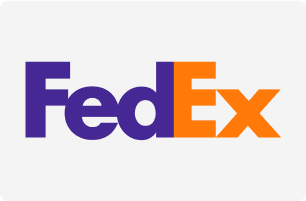Container tracking dictates the visibility of over 60% of all shipments globally. Generally ignored for the longest periods of time, container tracking became a burning issue during the Covid-19 pandemic as available capacity tanked and many shippers found their goods abandoned portside, with their logistics service providers unreachable when it came to container tracking updates.
As best practices evolve and shipper expectations change, container tracking has become a necessary service, and one that has faced much scrutiny in recent years, with existing solutions both delivering results and falling short in equal measure.
In this article, we’ll explore the evolution of container tracking, leading-up to the launch of Hapag-Lloyd’s “Live Position” service, and what to expect next.
Manual container tracking has been outpaced
Whether by phone or email, manually tracking containers through contacting third-parties such as the ocean carriers, terminals, customs authorities, or the freight forwarding service provider, is a time consuming exercise yielding mixed results. Depending on who you speak with, information gathered can be inaccurate and outdated.
Needing to reach out to a third party for an update on every key milestone, or having to sift through an already busy email inbox for container tracking updates is incompatible with today’s high-paced, and high-volume supply chains.
The many risks associated with tech-free container tracking
There isn’t a single positive outcome we can think of when it comes to container tracking via email or phone, aside from keeping your phone provider in business and your contacts busy. The negative repercussions are plentiful and operationally significant:
- Inefficient operations: by working with approximative and potentially erroneous container tracking data, all downstream planning, decision-making, and efficiencies are at risk.
- Increased costs: working with bad visibility leads to delays and disruptions, increasing operational costs, and leading to rerouting or potential stockouts
- Poor communication and collaboration: not only will relationships with service providers become tense when hunting down container tracking information, but downstream communications with other stakeholders relying on updates will lead to inefficiencies
In summary? Manual container tracking leads to strenuous relationships, inefficient processes, increased risks across the board, and unnecessary financial losses. Its no wonder that over a billion dollars has been invested into solving these issues.
The emergence of AIS
You cannot think about container tracking without taking some time to talk about the Automatic Identification Systems (AIS). With the majority of containerized freight moving at a snail’s-pace across the oceans, AIS utilized the ships transceivers to automatically broadcast key information such as position, course, and speed.
AIS was the first foray into real-time container tracking, offering real information based on GPS coordinates. Yes, the outcomes were, and remain, tangible. From reduced delays thanks to faster, automated, and more accurate container tracking updates, to an overall clearer picture of ship movements, AIS brought real outcomes to the container tracking puzzle. Often flying under the radar, the fact that AIS facilitated gathering and consolidating large quantities of data, enabling more scalable BI efforts, is also a big win provided by AIS.
AIS is not a container tracking magic pill
Although AIS was considered a major leap forward, it still falls short of being able to provide real-time container tracking. Limited in both coverage and data quality, AIS signals are periodically available at best, and any potential ETA changes will only be known once the vessel reaches coastal areas, or passes a dedicated receiver station.
Another issue with AIS is that it is ship dependent, not container specific. If your container falls off the ship, or never made it on board at all, but a human said otherwise, you will be non the wiser until you realize your container is not at the port of arrival.
Definite room for improvement.
The rise of container tracking aggregators
When it comes to visibility, there are a handful of names that always appear in Magic Quadrants and in discussions, especially for multimodal visibility. There are then a handful of interesting niche players who focus on specific regions, modes, or ports and terminal data.
Riding the visibility wave, the promise was, and remains, simple: real-time visibility of shipments. Has that been delivered? Kind of. Real-time is better defined by access in real-time to data that is more or less updated in real-time, depending on availability from their sources.
In essence, these companies are data aggregators, gathering tracking data from a number of different sources including the aforementioned AIS, carrier APIs, web scraping, IoT devices, and more. They then apply algorithms to the data, to in theory provide better insights, more precise ETAs, and more data points with operational and potentially strategic value to your business.
Another great advantage of these specialists is that they offer multimodal tracking across most, if not all, modes of transport, with the entire solution being offered in an agreeable front-end wrapper with UI and UX in mind.
The visibility aggregators: from meteoric rise to lukewarm landing
Between the three of them, these companies have invested over a billion dollars into their solutions. They aren’t bad solutions, although having spoken with a number of 3PLs, forwarders, and BCOs, results do seem to be hit and miss.
These platforms clearly benefited from the abundance of funding which ended on the tail-end of the Covid-19 pandemic. They also benefited greatly from the consequences of the pandemic on global supply chains overall, with a number of forwarders left wondering where their customers’ goods were, and cargo owners sometimes falling victim to capacity shortages created by Covid restrictions and last minute high-bidders stealing capacity.
Fast forward to 2024 and we’re still left trying to achieve total visibility in supply chains, with the aforementioned trio’s overall footprint in the space still to be cemented.
“Live Position” by Hapag-Lloyd: setting a new standard?
Fleet-wide coverage for dry containers within the Hapag-Lloyd network. No less than a device per container, providing container-specific data, rather than ship-issued data. A bold step forward, and the potential to really shake things up. With solutions such as Tive gaining popularity in the domestic freight market in the USA, seeing the first fleet-wide initiative of this scale is not surprising.
But just how much better will it prove to be?
Well, that depends on what you need to know, and when you need to know it.
Container tracking will only do so much, especially at sea
Your container is half way through a 25 day journey across the world’s oceans. AIS provides periodic updates when coverage is available. Devices provide more frequent updates, but continue to have grey zones. The good news is that by tracking the container, you’ll know if it made it onto the ship, and if it fell off during the journey. AIS is showing your ship near Dutch borders, yet your container is off the coast of the British Isles? It is safe to say something has gone very wrong.
But outside of these very specific, and low occurrence, edge cases, having a device on a container when at sea doesn’t provide huge amounts of value. If anything, its a little bit over the top, especially if the device is sending hourly, or even daily updates, when in the middle of the ocean.
Closer to land however, the plot thickens. Where AIS and the non-device enabled data aggregators can only provide the results of at best algorithmic magic, Hapag-Lloyd’s devices should, in theory, give you more reliable information, vastly improving outcomes.
Having an IoT device on a container, tracking its every move, allows you to automate more processes, establish better milestones, and work from exceptions. At least in theory. If your software enables you to. Which is what we do at Prompt Global. Click here to schedule a demo. We’ll get back to you within 24 hours and show you how to up your forwarding game.
Software and good data is where real value lies
The future of logistics visibility, beyond container tracking, needs a collaborative ecosystem. Collaboration between all stakeholders: carriers, data aggregators, forwarders, and other logistics players. At the heart of this collaboration is data, and on the front-end: great software solving real problems.
Hapag-Lloyd’s “Live Position” clearly is an improvement on the data front, with the potential to, if paired with great software, reduce issues such as detention and demurrage delays, idle resources, and inventory shortages. But how do you make that data work for you in a real world scenario?
Sure, Hapag-Lloyd are making APIs available, but where do you plug them into? What about your non-Hapag-Lloyd shipments? How can you consolidate Hapag-Lloyd container tracking with data from visibility aggregators, and make it operationally work with your CargoWise or Magaya FMS?
Software.
Container tracking is changing, and progress is being made, but it will be the smart marriage of clean, high quality data, reliable IoT, and powerful interconnecting software that will take visibility to the next level.
About Prompt Global
At Prompt Global, we work with both forwarders and BCOs to help improve supply chain transparency, leading to lower overall costs and a better overall experience. Solutions we provide range from minimizing unnecessary charges (detention, demurrage, customs non- compliance, SCOPE 3, etc) to optimizing the PO to booking process (reduce costs, reduce transit times, avoid known global supply chain issues). Further, our tech centralizes data into a unified platform that a BCO can utilize with all of its forwarders and similarly a forwarder can use with all of its shippers.
Our user base extends from DSV and FedEx to Kohl’s and HP.
Also, unlike most other logistics technology companies, we’re fully self funded and profitable so you don’t have to worry about our solvency or longevity.
Prompt is GDPR, ISO 27001, and SOC 2 compliant.



